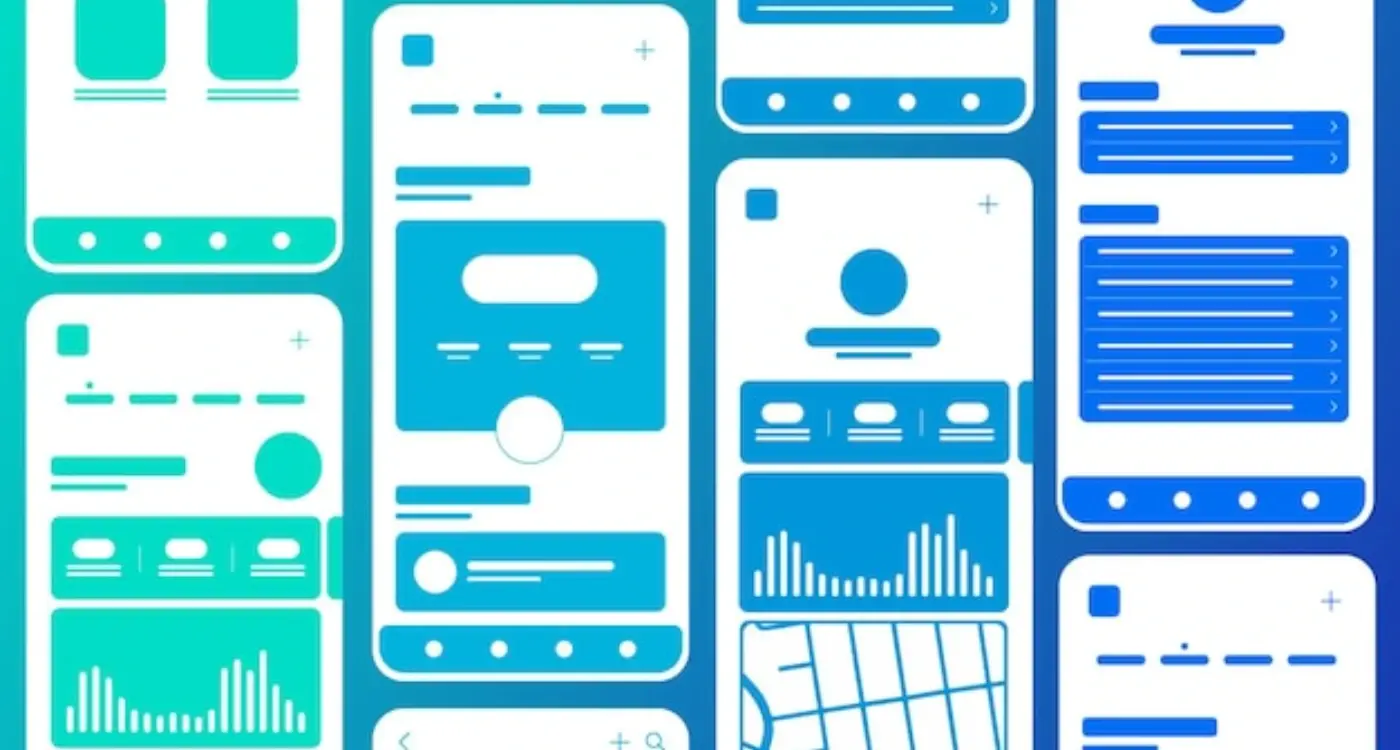What's The Best Way To Create Personalised Workout Plans In My App?
You've got this brilliant fitness app idea, but there's one problem that keeps cropping up—how do you create workout plans that actually work for each individual user? I see this challenge time and time again with clients. They want their app to be the one that finally sticks, the one that doesn't end up deleted after two weeks like so many others. The truth is, most fitness apps fail because they treat everyone the same way; they give the same generic workouts to a busy mum of three as they do to a twenty-something gym enthusiast.
The secret lies in personalised workouts powered by smart AI personalisation. We're talking about fitness plans that adapt to each user's goals, fitness level, available time, and even their preferences. It sounds complex, and honestly, it can be—but that's exactly why so many apps get it wrong.
The best fitness app isn't the one with the fanciest features; it's the one that makes each user feel like it was built specifically for them.
Over the next few chapters, we'll walk through everything you need to know to build truly personalised workout experiences. From understanding what your users actually want, to implementing AI that learns and adapts, to creating interfaces that don't overwhelm people. By the end, you'll have a clear roadmap for building an app that keeps users coming back for more.
Understanding Your Users and Their Fitness Goals
Creating personalised workout plans starts with knowing who you're building for—and I mean really knowing them, not just guessing. Over the years I've worked on fitness apps that failed because they made assumptions about what users wanted instead of actually finding out. The difference between a successful fitness app and one that gets deleted after a week often comes down to this single point.
Your users aren't all the same person with different faces. Some want to lose weight, others want to build muscle, and many just want to feel healthier. Some have thirty minutes a day, others have five. Some love high-intensity workouts that leave them sweating buckets; others prefer gentle yoga sessions. Getting this wrong means your app becomes irrelevant to most people who download it.
What Information Actually Matters
You need to collect the right data from the start. Age, fitness level, available time, preferred workout types, any injuries or limitations, and their main goals. But here's the thing—don't overwhelm them with a twenty-question survey on day one. Start with the basics and build up your understanding as they use the app. The best fitness apps I've seen learn about users gradually, asking relevant questions at the right moments rather than bombarding them upfront.
The Role of AI in Creating Personalised Workout Plans
AI personalisation has completely changed how fitness apps work—and honestly, it's about time! Gone are the days when everyone got the same basic workout routine regardless of their fitness level, injuries, or personal goals. Modern AI can analyse thousands of data points about each user to create truly personalised workouts that adapt in real-time.
The magic happens when AI combines user data with exercise science. Your app can track how quickly someone completes exercises, their heart rate patterns, which movements they struggle with, and even their workout frequency. Machine learning algorithms then use this information to adjust difficulty levels, suggest alternative exercises, and predict what type of workout will keep users coming back.
Key AI Features That Make Fitness Plans Personal
- Progressive difficulty adjustment based on performance data
- Exercise substitution for injuries or equipment limitations
- Workout timing optimisation based on user habits
- Recovery period recommendations using biometric data
- Goal-specific exercise selection and sequencing
What makes AI particularly powerful in fitness apps is its ability to learn from failures. If someone consistently skips certain exercises or stops workouts early, the AI can identify patterns and make smarter recommendations. It's like having a personal trainer who never forgets what works for each individual user.
Start with simple AI features like difficulty progression before moving to complex biometric analysis—users need to trust your basic personalisation before they'll share more detailed health data.
Collecting and Using Personal Data Responsibly
When you're building a fitness app that creates personalised workout plans, you'll need to collect quite a bit of personal information from your users. We're talking about age, weight, fitness level, medical conditions, workout preferences—the list goes on. And whilst this data is gold for creating brilliant personalised experiences, it comes with massive responsibility.
Let me be blunt: data privacy isn't just a nice-to-have anymore; it's absolutely non-negotiable. Users are more aware than ever about how their data gets used, and rightfully so. One data breach or privacy scandal can destroy years of hard work building your app's reputation.
Key Data Protection Principles
The good news is that responsible data handling doesn't have to be complicated. Start with these fundamental principles that'll keep you on the right side of privacy laws and user trust:
- Only collect data you actually need for the workout personalisation
- Ask for explicit consent before gathering any personal information
- Store data securely using encryption and secure servers
- Allow users to delete their data whenever they want
- Be transparent about what data you're collecting and why
The smartest approach? Build privacy into your app from day one rather than bolting it on later. Trust me, retrofitting privacy features is a nightmare you want to avoid.
Building Adaptive Exercise Algorithms
Right, this is where things get interesting—and honestly, a bit technical. The heart of your personalised workout app lies in its ability to adapt and learn from your users. I've worked on fitness apps where the algorithm was so rigid it might as well have been carved in stone; users got bored within weeks.
Your adaptive exercise algorithms need to consider multiple factors at once. User performance data, workout completion rates, heart rate feedback if available, and even how often they skip leg day (we've all been there!). The algorithm should start with basic user inputs—fitness level, goals, available equipment—then evolve based on real behaviour patterns.
Machine Learning Approaches
You don't need to reinvent the wheel here. Collaborative filtering works brilliantly for fitness plans; it's the same tech that powers Netflix recommendations. Users with similar profiles and preferences often respond well to similar workout structures.
The best fitness algorithms are the ones users don't even notice—they just know their workouts always feel just right
Real-Time Adjustments
Your AI personalisation should make micro-adjustments constantly. If someone's crushing their strength training but struggling with cardio endurance, the algorithm needs to recognise this pattern and adjust accordingly. This isn't just about making workouts harder or easier—it's about keeping users engaged and progressing towards their specific goals.
Creating User-Friendly Workout Interfaces
Getting your workout interface right can make or break your fitness app—I've seen brilliant personalisation engines ruined by confusing screens and cluttered layouts. The best workout interfaces feel invisible; users focus on their exercises rather than figuring out how to navigate your app.
Start with your workout display screen. This needs to show exercise names, rep counts, rest timers, and progress indicators without overwhelming people mid-workout. When someone's doing burpees and gasping for air, they don't want to hunt for the next exercise or squint at tiny text.
Making Workouts Easy to Follow
Your interface should guide users through each workout step-by-step. Large, clear buttons for starting, pausing, and skipping exercises work best. Include visual cues like progress bars and countdown timers—people need to know how much torture is left!
- Use large, thumb-friendly buttons that work with sweaty fingers
- Display exercise instructions with simple animations or videos
- Show rest periods clearly with prominent countdown timers
- Include easy access to workout modifications or alternatives
- Make the skip and repeat buttons obvious but not too tempting
Designing for Different Workout Types
Strength training interfaces need different layouts than cardio or yoga sessions. Weight lifting requires space for tracking sets and reps, whilst HIIT workouts need prominent interval timers. Design flexible templates that adapt to your personalised workout types rather than forcing everything into one rigid format.
Testing and Refining Your Personalisation Features
Right, so you've built your personalised workouts system and your AI personalisation is working. Now comes the part that separates good apps from great ones—testing everything properly. I can't stress this enough: your users will find problems you never even thought existed. They'll use your app in ways you never expected, and that's actually brilliant news because it means you can make it better.
Start with A/B testing your fitness plans. Show half your users one version of your workout recommendations and the other half a slightly different version. Maybe test different ways of presenting the exercises, or different timing for when the app suggests changes to their routine. The data will tell you what works and what doesn't—trust it over your gut instincts.
Set up analytics to track when users skip exercises or quit workouts early. These dropout points tell you exactly where your personalisation isn't working.
Real User Feedback Matters Most
Beta testing with actual fitness enthusiasts is gold. They'll spot when your AI suggests a beginner-level workout for someone who's been lifting weights for years, or when your algorithm completely ignores their knee injury preferences. Getting this feedback early saves you from launching something that frustrates people rather than helping them reach their fitness goals.
Keeping Users Motivated and Engaged
Building personalised workout plans is one thing—keeping people actually using them is quite another! I've worked on countless fitness apps over the years and there's a clear pattern between the ones that succeed and those that don't. The successful ones understand that motivation isn't just about clever algorithms; it's about making people feel good about themselves and their progress.
The key is making achievements visible and celebrating small wins. People need to see they're making progress, even when it doesn't feel like it. Progress tracking should be simple and visual—think colourful charts, streak counters, or completion badges that pop up after workouts.
Motivation Features That Actually Work
Here are the engagement techniques that consistently perform well across different fitness apps:
- Weekly challenges that adapt to each person's fitness level
- Social features where users can share achievements with friends
- Personalised reminder notifications (not generic spam!)
- Workout variety that prevents boredom from setting in
- Recovery day suggestions to prevent burnout
The biggest mistake I see is overwhelming users with too many features at once. Start simple. A basic progress tracker and gentle reminders will do more for engagement than twenty different gamification elements that confuse people. Remember, your users just want to get fit—make that journey as smooth and encouraging as possible.
Conclusion
Building personalised workouts into your fitness app isn't just about throwing some AI at the problem and hoping for the best—though I've seen plenty of developers try that approach! The real magic happens when you combine smart technology with genuine understanding of what your users actually need. From collecting data responsibly to creating algorithms that adapt over time, every piece of the puzzle matters.
The fitness app market is packed with generic workout apps that treat everyone the same. What sets successful apps apart is their ability to make each user feel like the app was built just for them. Whether someone's a complete beginner or training for their fifth marathon, your personalised fitness plans should meet them exactly where they are. AI personalisation makes this possible at scale, but only when it's implemented thoughtfully.
Remember that personalised workouts are only as good as the data they're based on and the interface that delivers them. Users won't stick around if your app feels clunky or invasive, no matter how clever your algorithms are. Keep testing, keep refining, and most importantly—keep listening to what your users tell you. They'll guide you towards building something that genuinely improves their fitness journey, not just another app that collects dust on their phone.
Share this
Subscribe To Our Learning Centre
You May Also Like
These Related Guides

What Are the Essential Components of Smart Recommendation Systems?

What Should Your App Do Before AI Takes Over Personalisation?



